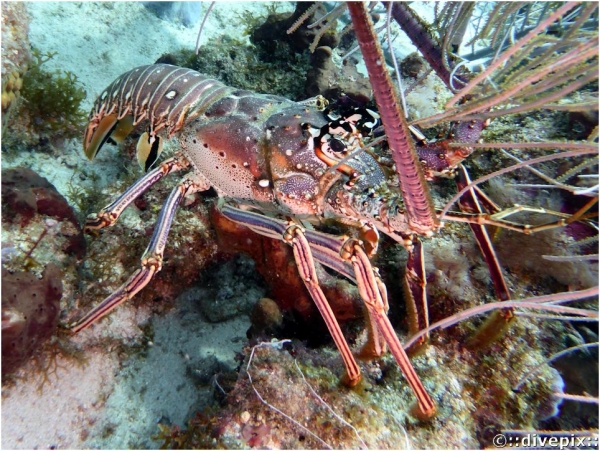| Aspect: | Dark brown to black head carapace and abdomen top, with the head carapace gradually turning orange/red and then tan on the sides. Each element of the abdomen carapace carries a line of between four and six white spots, with the larger spots on the sides. Legs are blue or purple. The swimmeretes (the shield-shaped plates) on the sides of the abdomen) have the same colour scheme as the tail, i.e yellow or orange with a black bar. |
| Population: | Common, can be seen day and night, with a preference for night. Entire families (of more than ten individuals) can often be encountered hiding under a rock ledge, or even under the side of a shipwreck keel. Because Ilets Pigeon are a protected area, some lobsters can reach humongous proportions. |
| Notable feature: | It is the largest lobster in this region, followed by the Spotted Spiny Lobster (q.v.). Large black eyes are located atop porminent stalks themselves protected by "horns". The antennae are purple. |
| Environment: | Lives around rocks and coral boulders that offer sheltering caves, which it enters backwards. When in danger, it also swims away backwards by violently thrusting its fully fanned out tail forwards. |
| Behaviour: | Wary, but can be easily be approached. |





Caribbean Spiny Lobster
- Désignation anglaise: Langouste Epineuse des Caraibes
- Désignation latine: Panulirus argus
- Désignation créole: Vonma ou Honma
- Famille en latin: Palinuridae
- Taille (cm): 40-60
View the embedded image gallery online at:
https://divepix.webdhb.com/index.php/fr/animalia/crustaceans/lobsters/134#sigProId959ab3fce0
https://divepix.webdhb.com/index.php/fr/animalia/crustaceans/lobsters/134#sigProId959ab3fce0




